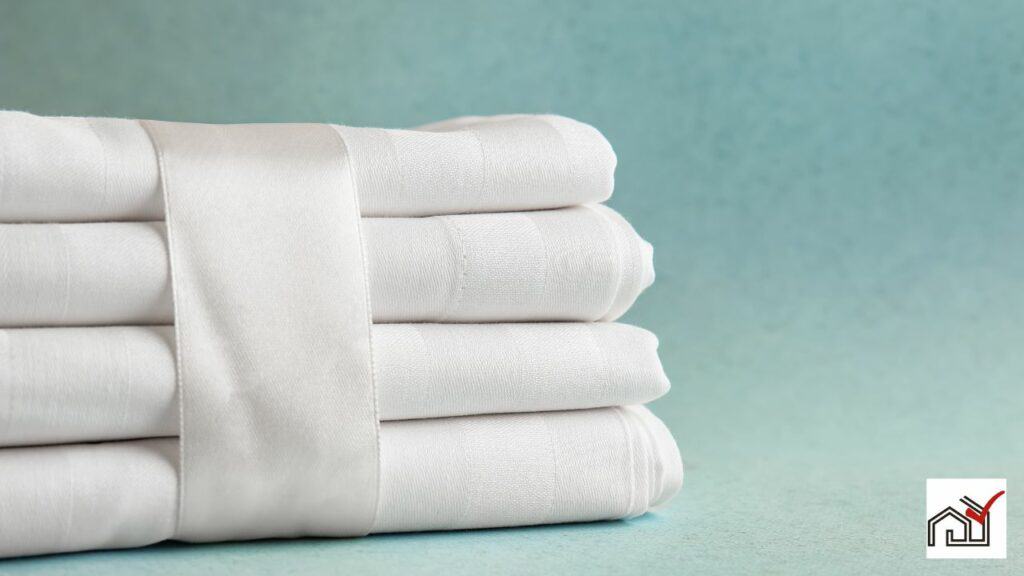It is advisable to wash a new mattress cover before using it to remove any residues from the manufacturing process, such as chemicals or dyes. Washing can also lessen irritants for those with sensitive skin.
In professional settings, cleanliness is crucial, making an initial wash necessary. This guide will examine the reasons for and benefits of pre-washing a mattress cover, along with any drawbacks.
It will provide washing instructions and highlight when pre-washing is especially important. Additionally, it will cover how to maintain and care for your mattress cover to ensure its longevity.
Initial Considerations
Before using a mattress protector, check the manufacturer's instructions for pre-use washing to maintain cleanliness. A mattress protector is effective in keeping out dirt and allergens if maintained properly. To wash it correctly, always consult the care label for specific instructions on wash cycles, temperature, and machine compatibility. Memory Foam mattress protectors may require special care.
Follow the care label to preserve the protector's qualities and avoid damage. A gentle or delicate wash cycle is often advised to protect waterproof layers. Avoid bleach or strong chemicals that can harm the materials and shorten the protector's life.
Benefits of Pre-Washing
Pre-washing a mattress cover removes manufacturing chemicals and improves sleep quality. It extends the cover's life and maintains its function as a barrier. Gentle detergent in the first wash prevents skin irritation from leftover chemicals.
The fabric softens, fitting better on the mattress and making it easier to handle. The process also removes dust mites, bed bugs, or pet dander, benefiting allergy sufferers.
Pre-washing maintains the cover's waterproofing and protective features, protecting the mattress and user health.
Potential Drawbacks
Potential drawbacks exist when pre-washing a mattress cover, including the possibility of material damage or reduced protective qualities. Adhering to manufacturer's care instructions is crucial to avoid harming the cover while keeping the mattress clean and protected. Different mattress covers have varied care requirements to maintain their defense against dust mites and allergens.
It is important to assess whether washing the cover before first use is necessary or if it can be used directly from the package. Incorrect washing methods can shorten the cover's life and impair its functionality. Using harsh detergents or excessive heat may damage waterproofing or other features that help guard against spills and stains.
Avoiding strong chemicals like bleach is essential to prevent fabric or barrier degradation. Not all mattress covers are machine washable, and for those that are, low heat tumble drying or air drying is often advised. High dryer temperatures can shrink or melt materials, reducing the cover's effectiveness.
Washing Instructions
Check the care label on the mattress cover for washing instructions to maintain it properly. Washing the mattress protector correctly keeps your sleeping area clean and extends the protector's life. They are usually machine washable for ease of cleaning.
Use cold water to wash the mattress protector to prevent shrinkage and fabric damage. Opt for a mild detergent to avoid material deterioration. Avoid harsh chemicals as they can weaken the mattress cover's protective layers.
Dry the mattress protector carefully after washing. High heat can harm the waterproof backing and elastic edges. Tumble dry on low heat or air dry if the label allows, to preserve the protector's quality.
For any specific stains, pre-treat with a stain remover that is safe for the fabric. Following these care instructions helps maintain the mattress protector's condition and ensures it protects your mattress effectively.
Special Cases to Consider
Special cases require additional care for washing mattress protectors. Individuals with allergies should wash their protectors every two to four weeks to prevent allergen accumulation. Use hot water for washing as per the care instructions to remove allergens effectively.
In case of food or drink spills, clean the protector immediately to prevent stains and odors. Prompt cleaning helps preserve the protector and ensures cleanliness. If the cover can be washed, remove it quickly and wash using a hot water cycle, and dry at high heat if needed to eliminate residues.
After recovering from a cold or flu, wash the mattress protector to remove bacteria. Use the highest temperature setting recommended by the care instructions to kill most germs and viruses.
For mattress protectors in guest bedrooms, wash them every two to three months to prevent dust buildup and keep them ready for use. Adhering to these guidelines is important for maintaining mattress protectors in specific situations.
Maintenance and Care Tips
Regular maintenance of mattress protectors is crucial for their longevity and function. They are critical for protecting mattresses against spills, stains, and allergens. To maintain their effectiveness, proper washing and care are necessary.
Most mattress protectors are suitable for machine washing. Wash them every one to two months, or every two to four weeks for allergy sufferers. Use cold or lukewarm water with a gentle detergent to avoid damaging the material. Hot water can cause shrinkage or impair waterproofing.
Drying the protector correctly is important. If allowed by the care label, tumble dry on a low heat setting. High heat can damage the waterproof layer. If a dryer is not available or the care instructions require it, air dry the protector, ensuring it is fully dry before reuse to prevent mold or mildew.
Having an extra protector is useful for rotation during washes, which also prolongs the lifespan of each one.
Wash new protectors before the first use to eliminate any manufacturing residues and achieve desired hygiene levels. Adhering to these care tips will help maintain the quality of your mattress over time.
Long-Term Advantages
Regularly washing mattress covers maintains hygiene and preserves their protective qualities. A clean cover helps prevent spills, stains, and allergens from reaching the mattress, which can extend its life and add comfort.
Most mattress covers are machine washable for easy care. Washing them regularly is important to prevent dust mites, skin flakes, and allergens that might cause respiratory problems or skin irritation. This is especially important for those with allergies or asthma.
Washing your mattress cover can also protect the mattress by keeping out moisture and debris that could damage it. Caring for your mattress cover helps protect your mattress investment and may save you from having to replace it prematurely.





